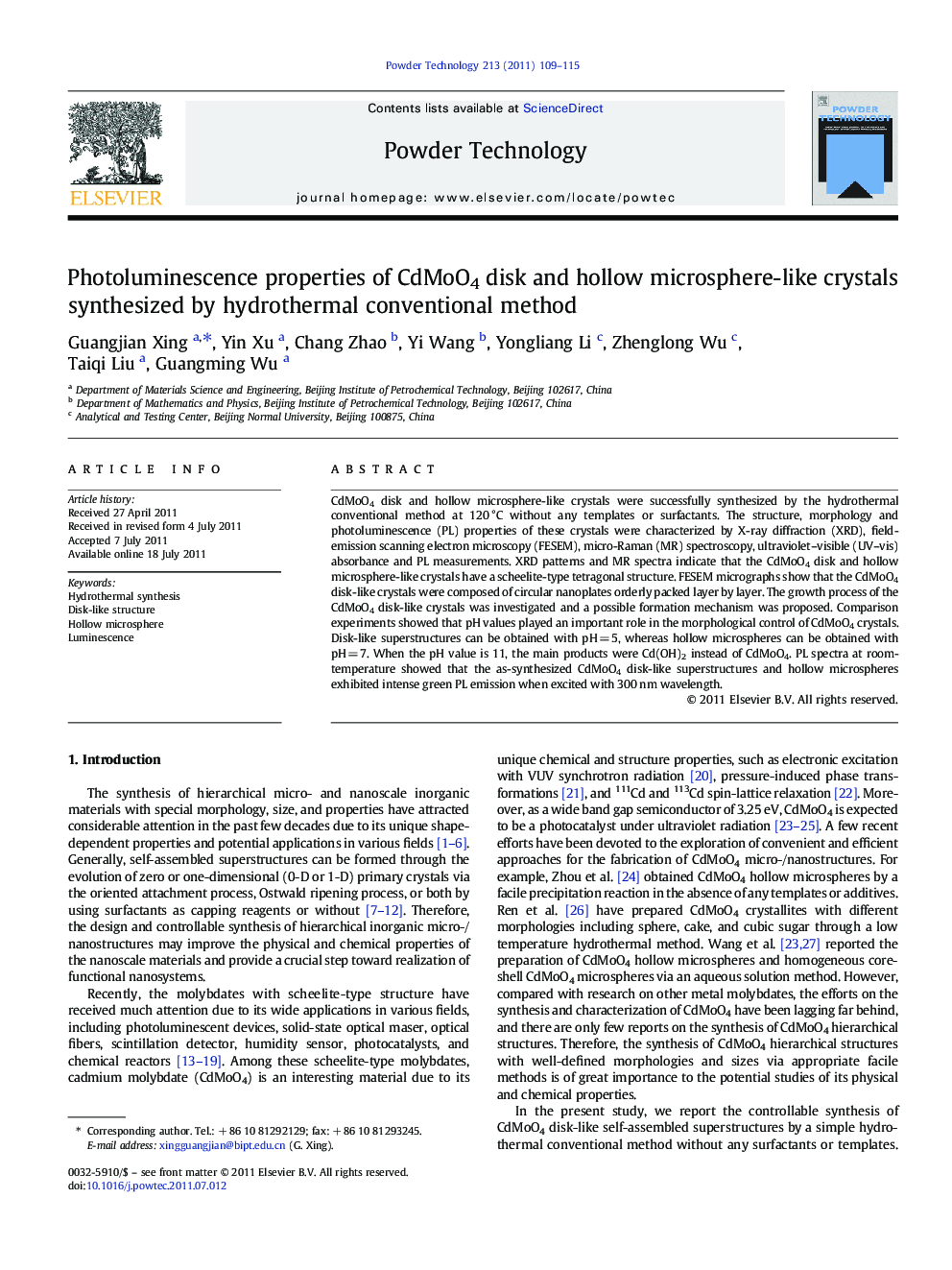| Article ID | Journal | Published Year | Pages | File Type |
|---|---|---|---|---|
| 237463 | Powder Technology | 2011 | 7 Pages |
CdMoO4 disk and hollow microsphere-like crystals were successfully synthesized by the hydrothermal conventional method at 120 °C without any templates or surfactants. The structure, morphology and photoluminescence (PL) properties of these crystals were characterized by X-ray diffraction (XRD), field-emission scanning electron microscopy (FESEM), micro-Raman (MR) spectroscopy, ultraviolet–visible (UV–vis) absorbance and PL measurements. XRD patterns and MR spectra indicate that the CdMoO4 disk and hollow microsphere-like crystals have a scheelite-type tetragonal structure. FESEM micrographs show that the CdMoO4 disk-like crystals were composed of circular nanoplates orderly packed layer by layer. The growth process of the CdMoO4 disk-like crystals was investigated and a possible formation mechanism was proposed. Comparison experiments showed that pH values played an important role in the morphological control of CdMoO4 crystals. Disk-like superstructures can be obtained with pH = 5, whereas hollow microspheres can be obtained with pH = 7. When the pH value is 11, the main products were Cd(OH)2 instead of CdMoO4. PL spectra at room-temperature showed that the as-synthesized CdMoO4 disk-like superstructures and hollow microspheres exhibited intense green PL emission when excited with 300 nm wavelength.
Graphical abstractFigure optionsDownload full-size imageDownload as PowerPoint slideHighlights► CdMoO4 disk-like structures and hollow microspheres were synthesized via hydrothermal method. ► Morphology of the products depends on the pH value and reaction time. ► Disk-like structures evolved from square nanosheets through loaf sugar. ► CdMoO4 disk-like structures show intense green PL emission at room temperature.
